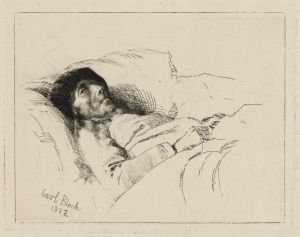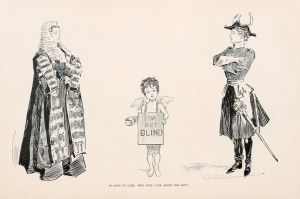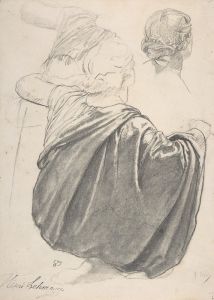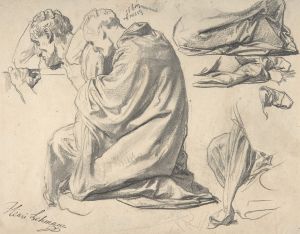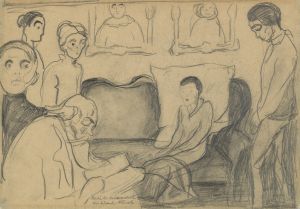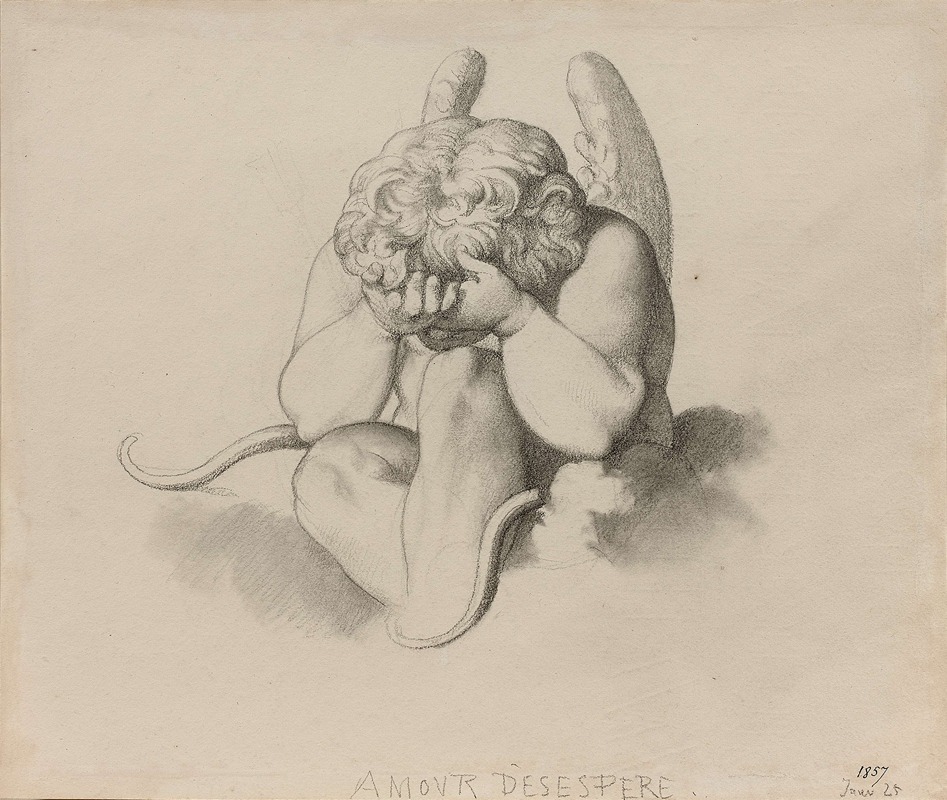
Amour désespéré
A hand-painted replica of Henri Lehmann’s masterpiece Amour désespéré, meticulously crafted by professional artists to capture the true essence of the original. Each piece is created with museum-quality canvas and rare mineral pigments, carefully painted by experienced artists with delicate brushstrokes and rich, layered colors to perfectly recreate the texture of the original artwork. Unlike machine-printed reproductions, this hand-painted version brings the painting to life, infused with the artist’s emotions and skill in every stroke. Whether for personal collection or home decoration, it instantly elevates the artistic atmosphere of any space.
Henri Lehmann's painting Amour désespéré (translated as Desperate Love) is a work by the 19th-century French painter Henri Lehmann (1814–1882). Lehmann, a student of Jean-Auguste-Dominique Ingres, was known for his portraits, historical paintings, and works that often reflected the academic style of the time. However, specific details about Amour désespéré are scarce, as this painting is not among Lehmann's most widely documented works.
Lehmann was born in Kiel, Germany, but spent most of his career in France, where he became a prominent figure in the art world. He exhibited regularly at the Paris Salon and was recognized for his skill in capturing emotion and narrative in his works. His paintings often explored themes of love, mythology, and human emotion, which aligns with the title Amour désespéré. The title suggests a focus on the theme of unrequited or tragic love, a subject that resonated with the Romantic and academic art movements of the 19th century.
Despite Lehmann's prominence during his lifetime, many of his works, including Amour désespéré, have not been extensively studied or documented in modern art historical literature. As a result, there is limited information available about the painting's creation date, dimensions, medium, or current location. It is also unclear whether the work was part of a larger series or created as a standalone piece.
Lehmann's broader body of work reflects his mastery of classical techniques and his ability to convey complex emotions through composition and detail. His connection to Ingres is evident in his precise draftsmanship and the idealized yet expressive figures in his paintings. While Amour désespéré is not widely discussed in existing scholarship, it can be assumed that the painting shares these characteristics, given Lehmann's consistent style and thematic interests.
In summary, while Henri Lehmann is a notable figure in 19th-century art, specific information about Amour désespéré is limited. Further research or discovery of archival materials may provide more insight into this particular work.





